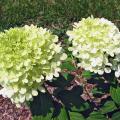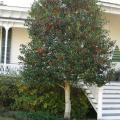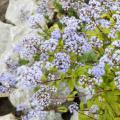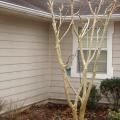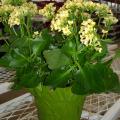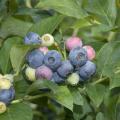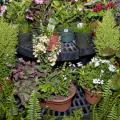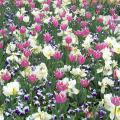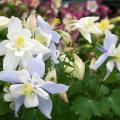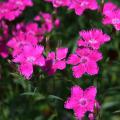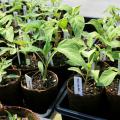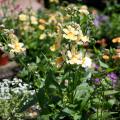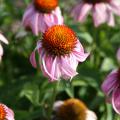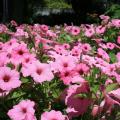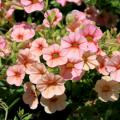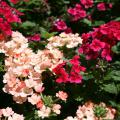Southern Gardening from 2010
By Norman Winter
MSU Horticulturist
Central Mississippi Research & Extension Center
Mississippi, you are the best, and that makes it extra hard to tell you I have accepted an offer to become vice president for college advancement at Brewton-Parker College in Mount Vernon, Ga.
Numerous landscape plants have attractive foliage mixed with colorful berries, but few can match the brilliant luster of a holly.
The striking, dark green leaves of hollies provide a beautiful backdrop for their deep red and orange berries. Another reason these plants are so popular in the landscape is their ability to adapt to environmental conditions.
Even though it’s cold outside, now is a good time to stroll through your yard with pencil and paper in hand, noting what worked and what didn’t in your landscape last year. Viewing it during the bare-bones winter season will help you see where changes should be made.
Now, I know you’re thinking you’re not a designer, but I say you are. This is your garden, so do what looks pleasing and functional to you. There is a tremendous amount of information on landscape design available in books and on the Internet, but you are the judge of what works for you.
Late January is a great time to get garden beds ready for spring and summer by adding organic matter to help build a healthy soil.
Peat moss and pine bark mixes are commonly added to garden soil to increase organic content, but other materials, such as yard waste and manures, can also be used. Yard wastes and manures generally give favorable results when used with ornamental plants.
With Valentine’s Day just around the corner, many people start thinking of giving roses to their sweetie, but they often worry that their choice will send the wrong message on this day dedicated to love.
Valentine’s Day has many legends surrounding its origin, but the truth is, no one really knows much about its beginnings. Some say St. Valentine of Rome is the saint associated with this holiday, while others claim it is St. Valentine of Terni. Both died on Feb. 14.
We've all seen it happen, and some of us have even committed it. We try not to stare, but we can't look away. It's just so...well, ugly. It is 'crape murder,' and it's no laughing matter.
Crape murder occurs when crape myrtle trees are pruned to the same point for many years, causing unsightly knots on the trunks. This greatly diminishes the plant's aesthetic appeal and its structural integrity.
This time of year can be hard on gardeners. The weather is nasty and we’re all closed up inside the house getting more irritable by the minute. It’s time to liven the mood with a blooming houseplant.
Check out your local garden centers or even the grocery store’s florist department for a cheery blooming azalea, Reiger begonia, cineraria or kalanchoe. Once you bring yours home, there are a few things you can do to get the longest cheery impact.
I don’t want to alarm anyone too badly, but there are multiple volcanoes forming in our Mississippi communities as you read this column.
When you hear the word “volcano,” you might think of active volcanoes in Hawaii or other places around the globe. Some might envision the big volcanoes in the solar system, such as the one on Mars that is as big as Arizona. Still others remember bad Hollywood movies like Volcano, about a volcano forming under Los Angeles.
If limited time or garden space challenges you to decide between an ornamental landscape and a vegetable or fruit garden, you may want to look at both of these areas from a new perspective.
The concept of incorporating edible plants into an ornamental garden is not new. Many of us are already doing it. Adding a pot of rosemary or parsley to your patio certainly qualifies. Most perennial or annual herbs or vegetables are great for containers or borders and can be beautiful as well as tasty.
Do you ever wonder how some people manage to have such beautiful plants in their gardens? You may think they shop somewhere special you’ve never heard about and know deep gardening secrets, but you, too, can create an inspiring landscape and grow beautiful and healthy plants.
It all begins with selecting healthy specimens at the local nursery or garden center. Look for plants that have strong branches with no crossed limbs and straight and sturdy trunks. The leaves should be of normal size, shape and color for that plant species.
Spring is one of my favorite times in the garden as the transition begins from a long, cold winter to gardens full of flowers in summertime.
Mississippi has many plant species that bloom very early in the year when the temperatures are still fairly cool. Tulips, daffodils, crocus and hyacinth color the garden when there are few other flowers. However, the downside to these wonderful spring-flowering plants is the foliage begins to look ratty after the flowers are spent.
With flowers suspended on thin, wiry stems, bobbing along in the breeze as if floating on water, the columbine makes the perfect addition to any garden or landscape.
Columbine foliage is reminiscent of maidenhair fern, being attached to the plant by long petioles. The flowers are an interesting landscape addition with colors ranging from purple and blue to yellow, white and red. Columbine bi-colored varieties of red and white, red and yellow, and blue and white are spectacular. The flowers either turn up or nod downward.
When a plant with pretty flowers is advertised as easy to grow, it always catches the gardener’s eye. While plants may not live up to this billing, pinks deliver in the landscape.
You can call them cottage, cheddar or just plain pinks, but this group in the Dianthus genus are composed of several species and hybrids. Pinks are close relatives of the florist carnation and the wildflower Sweet William.
Many folks have been waiting for this moment. It is after Easter, and it is time to plant our warm season vegetable crops. Let’s start with heirloom tomatoes.
Heirlooms are not your typical grocery store tomato. They come in every shape, size and color imaginable. The fruits are treasured as having more flavor, increased nutritive value and greater natural beauty.
What makes an heirloom tomato different? In a word: tradition.
Nemesia and erysimum are two plants you may have never heard of, but they can certainly deliver in your spring garden.
Nemesia species are native to South Africa and look similar to snapdragons. Many of these have been selected for use as potted plants. There are colorful hybrids being developed for use as annual bedding plants for the spring and summer seasons.
Purple coneflowers are native plants that look great in the prairie as well as in formal designs. I personally think the purple coneflower is one of the best plants you can use in your garden.
There are nine species of purple coneflower, or Echinacea, native to North America. The main species found in the trade is the Eastern purple coneflower. It grows up to 3 feet tall and wide, producing bright purple flowers with dark centers. The 2- to 4-inch diameter flowers bloom until frost. The foliage and stems have hairy surfaces that might remind you of medium-grit sandpaper.
There are many excellent petunias on the market—too many to detail in this column—so I am going to concentrate on what I consider one of the best petunias series: the Supertunias.
There are two groups in this series, the Supertunias and the Supertunia Vistas. Supertunias grow to about 12 inches tall and have a vigorous spreading habit. The Supertunia Vistas are bigger and can reach 24 inches tall. Both types are hummingbird and butterfly magnets.
Those who love plants have surely been to their favorite garden center this spring and noticed calibrachoa, the great warm-season performer with small flowers that look like petunias.
Calibrachoa (pronounced kal-ih-bruh-KO-uh) is more commonly called Million Bells. These plants are related to petunias and should be grown in full sun. They produce an unbelievable number of 1-inch-wide flowers from spring until frost.
As spring turns into summer, gardeners start looking at flowering plants that take the heat while putting on a good floral display. Annual vinca is always a good choice.
Annual vinca’s foliage is a dark, glossy green with a prominent rib in the middle of the leaf. This dark background really sets the stage for showing off the white, pink, purple and red flowers.
Annual vinca is available in both upright and spreading growth habits. Various series have been studied extensively in the Mississippi State University trials at Crystal Springs and Poplarville.
Verbenas are great flowering plants that have been garden staples for many years. They will provide you with three seasons of color if you provide a few necessities for them.
There are more than 250 species of verbenas with many native to the New World. Breeders have been hard at work, and most new selections bear little resemblance to their forbears.

